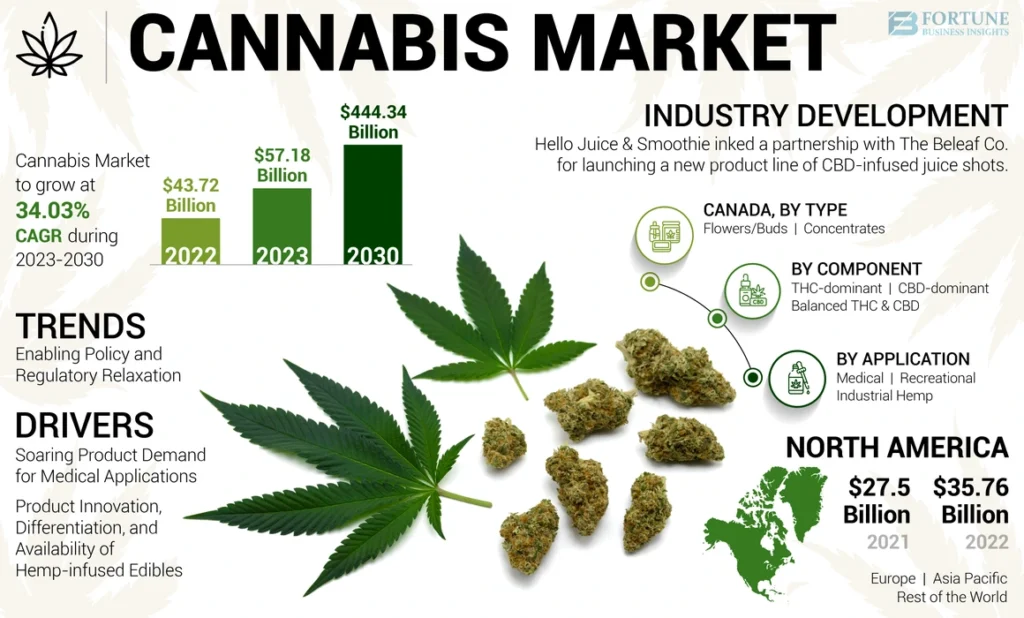The cannabis industry is undergoing a major transformation—what was once a black-market activity is now emerging as a legitimate, multi-billion-dollar global business. From North America to Europe, and even parts of Asia, cannabis legalization is gaining momentum, bringing with it massive shifts in policy, economics, and public perception.
In this post, we’ll explore how changing cannabis laws are influencing the industry’s direction and what it means for producers, consumers, and investors alike.
The Legalization Landscape: Where We Are Now
Cannabis legalization isn’t a one-size-fits-all process. Different countries (and even regions within countries) are approaching it in their own way:
- Canada fully legalized recreational cannabis in 2018, making it the first G7 nation to do so.
- The United States has legalized cannabis in over 20 states, but it remains illegal at the federal level.
- Germany, Malta, and Luxembourg are leading the charge in Europe with steps toward regulated recreational markets.
- Thailand made headlines in 2022 by decriminalizing cannabis—becoming the first in Asia to take such a step, although regulations are still evolving.
These legal changes are creating ripple effects across global economies, trade policies, and health systems.
How Legalization Impacts the Industry
1. Growth of Regulated Markets
Legalization opens the door for a regulated market where products can be taxed, tracked, and safely consumed. This creates:
- New business opportunities (dispensaries, cultivators, manufacturers)
- Job creation in agriculture, tech, logistics, and retail
- Increased tax revenues that fund public health, education, and social programs
According to recent industry data, the global legal cannabis market could surpass $70 billion by 2028 if current trends continue.
2. Innovation and Research
In legal markets, research restrictions are lifted, enabling the study of:
- Medical applications of cannabinoids
- Alternative delivery methods (e.g., sublingual strips, beverages)
- Plant genetics and terpene profiles
This fuels a wave of product innovation, from low-dose edibles and CBD-infused skincare to pharmaceutical-grade cannabis treatments.
3. Quality and Safety Standards
Legal markets allow for:
- Lab-tested products with verified THC/CBD content
- Clear labeling and dosage guidelines
- Safer alternatives to unregulated black-market goods
Consumers benefit from transparency and protection, while brands can build long-term trust.
4. Challenges for Legacy Operators and Small Businesses
While legalization brings legitimacy, it also introduces barriers:
- High compliance costs
- Complex licensing processes
- Market saturation in mature regions
Legacy growers and small entrepreneurs may find it hard to compete with large corporations or navigate shifting laws. Equity-focused legalization efforts aim to level the playing field, but implementation varies widely.
5. International Trade and Export Potential
Countries with established growing operations—like Canada and Colombia—are positioning themselves as global suppliers. As legalization spreads, we could see:
- International cannabis trade agreements
- Cross-border product innovation
- Increased competition on quality, sustainability, and branding
However, trade remains limited by international treaties, which still classify cannabis as a controlled substance in many regions.
What’s Next: Trends to Watch
- Federal legalization in the U.S. — This would reshape global markets overnight.
- Social equity programs — More regions are designing policies to support communities most impacted by prohibition.
- Big Pharma and beverage companies — Expect continued partnerships and acquisitions in the space.
- Sustainable cultivation — Water use, energy efficiency, and organic certification are becoming competitive advantages.
- Data-driven retail — Tech integration is helping dispensaries personalize experiences and optimize inventory.
Final Thoughts
Legalization is not just a legal issue—it’s an economic, cultural, and scientific revolution. As more countries shift policies and public attitudes evolve, the cannabis industry will continue to adapt and expand in exciting (and unpredictable) ways.
Whether you’re a business owner, consumer, or policymaker, understanding these shifts is key to staying ahead in this fast-moving sector.






